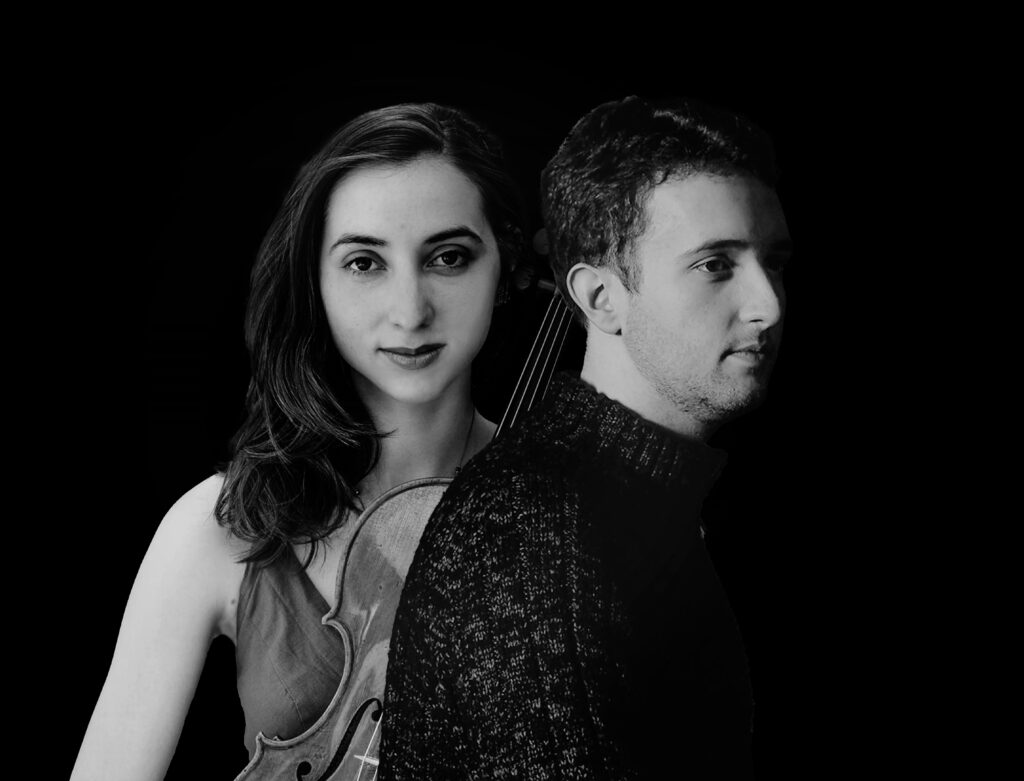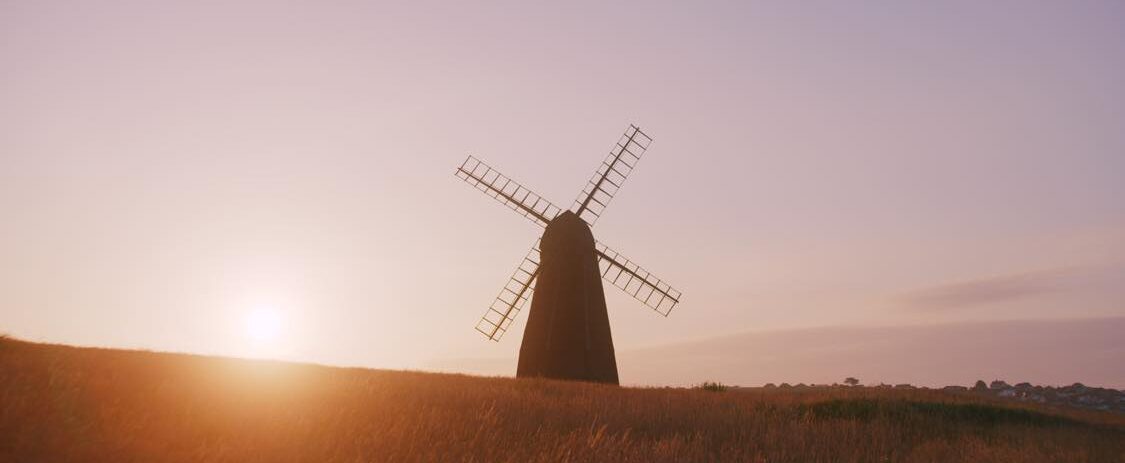DUO FABULAE + FILM
FROM DOWLAND TO BRITTEN: ENGLISH NATURE THROUGH MUSIC
JOHN DOWLAND (1563 – 1623)
Flow my tears
BENJAMIN BRITTEN (1913 – 1976)
Lachrymae
REBECCA CLARKE (1886 – 1979)
Dumka, trio for violin, viola & piano
FRANK BRIDGE (1879 – 1941)
Cello Sonata + FILM
I. Allegro Moderato
II. Adagio
Duration
53 minutes
GUEST ARTIST
Radu Rojas, filmmaker
Julia Loucks, violin
Duo Fabulae
Lorena Cantó, Viola
Yvain Calvo, Piano

DUO FABULAE / VIOLA & PIANO
Formed by avid film enthusiasts, duo Fabulae is a viola and piano ensemble based in London. Founded in 2020, they had won several competitions and perform in the UK and across Europe. Their programming is often based around storytelling and includes their own arrangements of songs.
This year’s project on the Frank Bridge Cello Sonata has involved adapting the work to make it suitable for the viola and thus offer new musical perspectives on the piece.

RADU ROJAS / FILMMAKER
Radu Rojas is a filmmaker and pianist based in London. His documentary filming has taken him all over the UK and abroad to make people’s voices heard.
Radu has been collaborating with the duo on a year round project on the Frank Bridge Sonata funded by the Guildhall School of Music & Drama Futures, in order to create a visual narrative that might enhance the meaning of the music. This project will be showcased at the end of the programme.
ABOUT THE MUSIC
Composers have long been inspired by the beauty of nature, and this can be seen in the works of many great composers throughout history. The music of Frank Bridge and Benjamin Britten shows an intense love for nature, evident in their compositions’ stylistic and melodic structures. This love for nature has its roots in earlier British music, such as the songs of John Dowland, which feature pastoral and bucolic motifs that invite reflection on the symbolism found in the natural world. However, during the First World War, this love for nature took on a new significance as the natural world became a symbol of hope and restoration in a time of great destruction. In response, many composers used their music as a means of reflecting on the destruction wrought by the war and exploring themes of loss, grief, and the struggle for hope and renewal.
Some, like Frank Bridge, wrote elegies mourning the loss of life as well as the destruction of the natural world, as can be heard in his cello Sonata. This evolution can be seen in the shift from Dowland’s relatively simple pastoral themes to the more complex and meditative nature-imagery of Bridge and Britten. While Dowland’s songs are mindful and melancholic, Bridge and Britten’s works, while still beautiful and meditative, contain darker and more tense undertones in response to modern, industrialised society’s impact on the environment. Overall, the love for nature in Bridge and Britten’s music shows a deepening sense of humanity’s interconnectedness with the natural world, and how that relationship affects the way we see our lives and the societies we build. To help convey this message, we would like to offer to accompany the performance of the Frank Bridge cello Sonata with a silent film directed by Radu Rojas. This collaboration has been part of a project aimed at visualising music, funded by the Guildhall School of Music & Drama Futures.

ABOUT THE FILM
This audiovisual experience of music and film offers a journey through Sussex’s landscapes, while reflecting on Frank Bridge’s inner world while he composed the Sonata in D minor for Cello and Piano amidst WWI. Inspired by Bridge's life and his childhood surroundings, the short film accompanying his Cello Sonata is charged with meaning and hidden symbolism.
THE QUIET WINDMILLS
Frank Bridge was born in 1879 in Brighton. He began playing the violin in his early childhood and soon started composing. His early compositions are nostalgic, influenced by romantic composers such as Tchaikovsky and Brahms. An idyllic and pleasant quality is felt in these early works.
There are many old windmills in Sussex. Some stand in the wide open fields, such as the Rotttingdean Windmill, while others are hidden, accesible only through long winding roads. The film that accompanies the cello and piano sonata has adopted the windmill as an important symbol of English rural life. In the past, their sails rotated, marking the slow and peaceful rhythms of grazing cows and quiet mornings…
A LIGHTHOUSE BY THE SEA
Before composing the sonata, Frank Bridge was well known for his pastoral pieces. One such piece is the sea. Composed two years before WWI, the sea is divided in four movements which end in storm, as if it was foreboding the war. Nevertheless, the end of the piece features a triumphant return to the majestic theme that inaugurates the sea, declaring Bridge’s faith in the harmonious beauty of nature.
During filming, we gravitated towards Beachy Head Lighthouse near Eastbourne because of how iconic this location is. Surrounded by the sea, the lighthouse stands as a symbol of hope—its beaming light warning ships of danger while guiding them to safety.
waR MEMORIALS
Frank Bridge was 37 when the first world war began. He composed the cello and piano sonata during the war years, during which his style changed dramatically. Many of his friends and colleagues were killed in action—including his pupil and composer Ernest Farrar. He composed several pieces in the memory of the victims of war.
The inspiration behind the lantern that features during the second movement is a war memorial found in a cemetery near Storrington. This memorial is composed of a plinth with a lantern on top dedicated to the crew of a submarine that perished in 1916. It bears the inscription “Let Your Light Shine Before Men”.
RUINS OF SUSSEX
It is an understatement to say that the war affected Frank Bridge very deeply. It caused an identity crisis in his musical style, as he sought out to replace his pastoral, nature-inspired style with one that incorporated the traumas of the war. This radical transformation is seen in the cello and piano sonata, where pastoral innocence and war hauntings seem to fuse in an unstable flurry of musical styles.
Ruins are the remnants of past history, and they’re to be found in every corner of Sussex. For filming, we visited remains such as the gatehouse of Bramber Castle, the burnt Brighton Pier, and the now unused Shoreham Fort. They all act as reminders of the events that in some small or big way have shaped our present. As Sussex historian David Arscott writes “No event, as no man, is an island entire of itself.”
CASTLES OF WAR
According to Bridge’s student and renowned composer Benjamin Britten, Bridge was a dedicated pacifist throughout his life. Until he completed the sonata it is said that Bridge was “in utter despair over the futility of World War One and the state of the world and would walk round Kensington in the early hours of the morning unable to get any rest or sleep.” Bridge kept composing until his death in 1941, shortly after the beginning of WWII.
The two castles featured belong to an era that precedes WWI. Pevensey Castle is a medieval castle built around 290AD, while Camber Castle was constructed in the 16th-century to protect the Sussex coast against French attacks. These castles hint towards a long history of military conflicts. War has been with humanity for millennia—what is it about it that we can’t seem to let go of?
Frank Bridge, Cello Sonata. Mov.1 Teaser
Frank Bridge, Cello Sonata. Mov.2 Teaser


